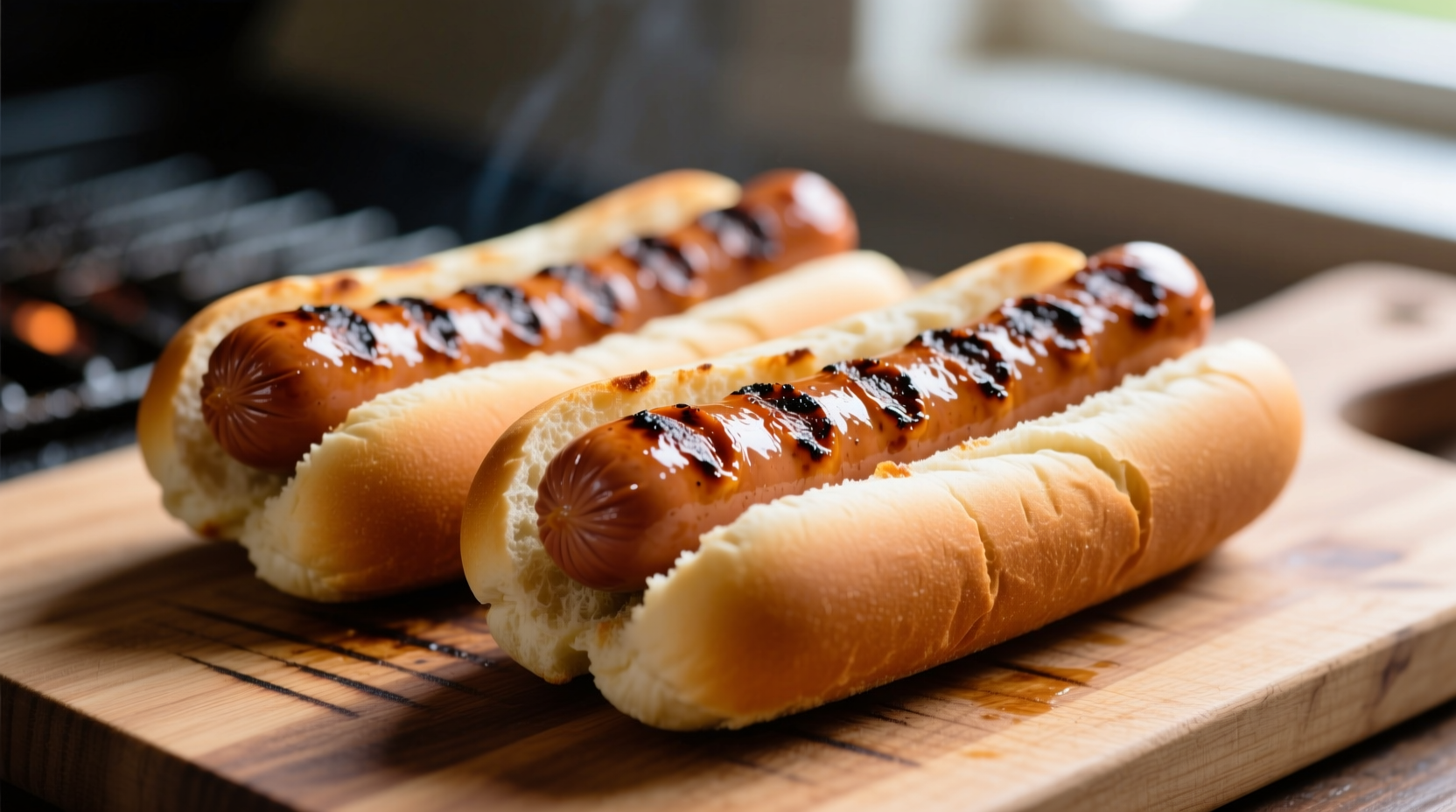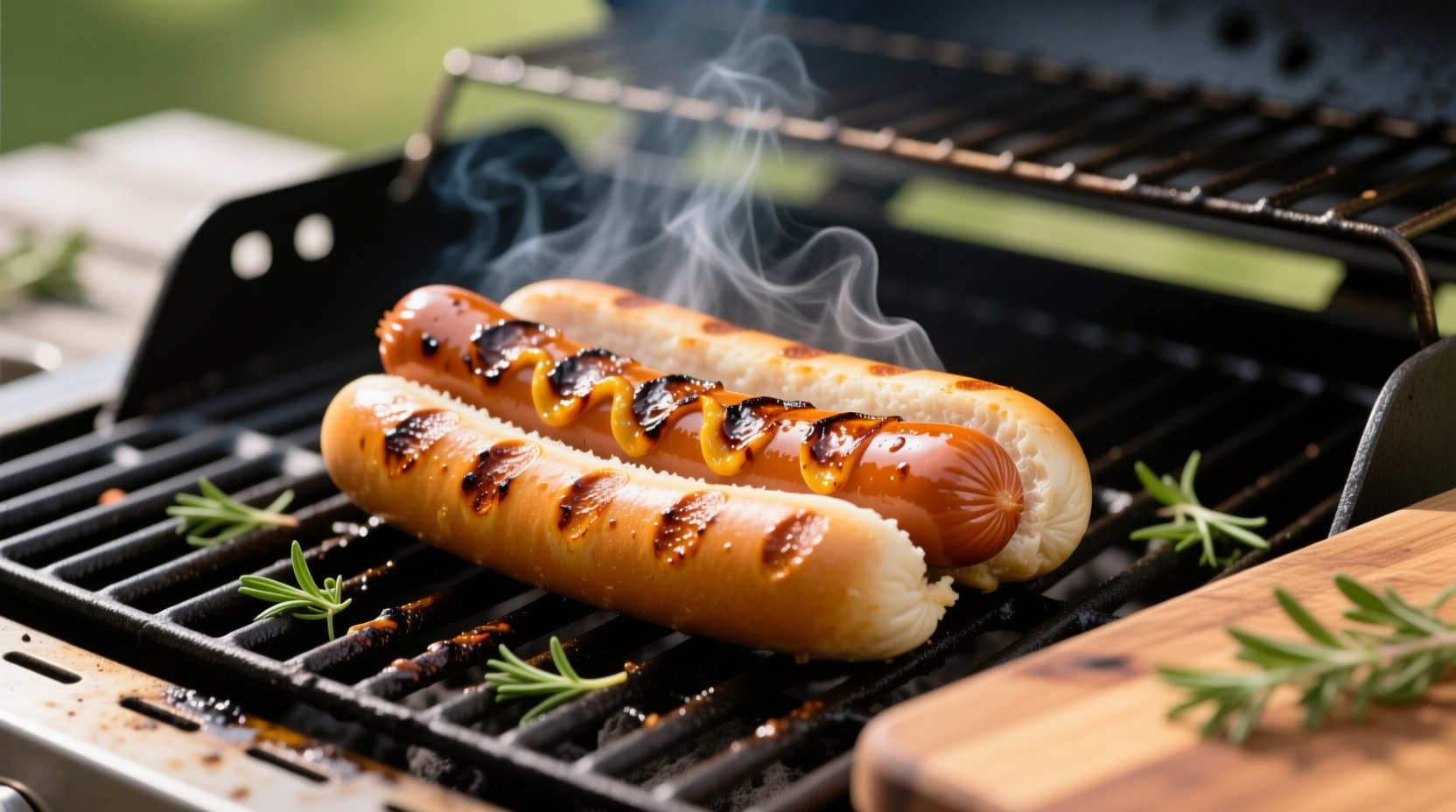The Complete Guide to Perfect Hot Dog Cooking Times
Nothing ruins a backyard barbecue or quick weeknight meal faster than poorly cooked hot dogs. Whether you're hosting a summer cookout or preparing a simple lunch, knowing exactly how long does it take hot dogs to cook makes all the difference between juicy perfection and dry disappointment. This guide delivers precise timing for every cooking method, backed by food safety standards and professional kitchen experience.
Why Proper Hot Dog Cooking Time Matters
Hot dogs present unique food safety considerations. While pre-cooked, they require reheating to 160°F (71°C) to eliminate potential listeria bacteria, according to the USDA Food Safety and Inspection Service. Undercooked hot dogs pose health risks, while overcooking causes splitting, juice loss, and that unpleasant rubbery texture everyone wants to avoid.
Hot Dog Cooking Methods Compared
Each cooking technique delivers different results. Choose based on your desired outcome and available equipment:
| Cooking Method | Time Required | Best For | Temperature Target |
|---|---|---|---|
| Boiling | 5-7 minutes | Uniform heating, indoor cooking160°F internal | |
| Grilling | 7-10 minutes | Smoky flavor, summer cookouts160°F internal | |
| Pan-Frying | 6-8 minutes | Crispy exterior, quick indoor method160°F internal | |
| Microwave | 1-2 minutes | Emergency meals, minimal cleanup160°F internal |
Boiling Hot Dogs: The Foolproof Method
For consistent results every time, boiling remains the most reliable technique for how long do hot dogs take to cook indoors. Place hot dogs in a saucepan with enough water to cover. Bring to a gentle simmer (not a rolling boil) and cook for 5-7 minutes. The water should maintain a temperature just below boiling point (180-190°F) to prevent casing rupture.
Pro tip: Add 1 tablespoon of vinegar to the water before heating. This slightly acidic environment helps maintain casing integrity while cooking, preventing splits without affecting flavor.
Grilling Hot Dogs: Achieving Perfect Char
When answering how long does it take hot dogs to cook on the grill, timing depends on grill temperature. For medium heat (350-400°F), cook for 7-10 minutes with frequent turning. Never pierce hot dogs with a fork during grilling - this releases precious juices. Instead, use tongs for turning.
For optimal results, create two heat zones on your grill. Start hot dogs over indirect heat for 3-4 minutes to warm through, then move to direct heat for 2-3 minutes to develop those attractive grill marks and slight char. This two-stage method prevents the common mistake of burnt exteriors with cold centers.

Pan-Frying: The Crispy Exterior Technique
Pan-frying delivers that desirable crispy texture many home cooks seek. Heat a skillet over medium heat with 1-2 tablespoons of water. Add hot dogs and cook for 6-8 minutes, turning frequently. The water creates steam that gently heats the interior while the direct contact with the pan creates a crispy exterior.
For restaurant-quality results, make shallow diagonal cuts about 1/4 inch deep along the hot dog before cooking. This increases surface area for browning while allowing heat to penetrate more evenly - crucial for understanding how long do hot dogs take to cook properly.
Microwave Method: Emergency Cooking
When time is critical, microwaving provides the fastest solution for how long does it take hot dogs to cook. Place hot dog in a microwave-safe dish with 1/4 cup water. Cover and microwave on high for 1-2 minutes depending on wattage. A 1000-watt microwave typically requires 1 minute 15 seconds.
Important safety note: Never microwave hot dogs without water or in their packaging. The water creates necessary steam for even heating, while packaging can contain metal elements that cause sparking.
Visual Indicators of Perfectly Cooked Hot Dogs
Beyond timing, use these visual cues to determine doneness regardless of cooking method:
- Plump appearance - Properly cooked hot dogs expand slightly but maintain shape
- Slight wrinkling - The casing develops fine wrinkles when fully heated
- Steam release - Visible steam when cut indicates proper internal temperature
- Color change - From pale pink to richer reddish-pink hue
Always verify with a food thermometer inserted sideways into the center. The USDA requires 160°F (71°C) for processed meats like hot dogs to ensure food safety.
Common Hot Dog Cooking Mistakes to Avoid
Even experienced cooks make these errors that affect how long does it take hot dogs to cook properly:
- Starting from refrigerator temperature - Cold hot dogs require 1-2 minutes longer cooking time. Let them sit at room temperature for 10 minutes before cooking
- Overcrowding the cooking surface - This drops temperature and creates steaming instead of searing
- Using high heat throughout - Causes casing rupture before interior reaches safe temperature
- Skipping the resting period - Let hot dogs rest 1 minute after cooking to redistribute juices
Special Considerations for Different Hot Dog Types
Not all hot dogs cook at the same rate. Adjust timing based on these factors:
- Beef vs. poultry hot dogs - Poultry varieties typically require 1-2 minutes less cooking time
- Size variations - Stadium-style hot dogs need 2-3 minutes longer than standard sizes
- Homemade vs. commercial - Artisanal hot dogs with natural casings may require slightly lower temperatures
- Frozen hot dogs - Add 3-4 minutes to cooking time without thawing first
When cooking multiple varieties simultaneously, always base timing on the most delicate type to prevent overcooking.
Food Safety Timeline for Hot Dogs
Understanding the temperature timeline helps prevent both undercooking and overcooking:
- 100°F - Bacteria begin multiplying rapidly (danger zone)
- 130°F - Listeria starts to die but requires sustained time
- 140°F - Significant bacteria reduction begins
- 160°F - USDA minimum safe temperature for processed meats
- 170°F+ - Risk of texture deterioration and juice loss
This scientific approach to how long do hot dogs take to cook ensures both safety and quality.
Perfect Hot Dog Serving Tips
Timing doesn't end at cooking completion. For the best experience:
- Warm buns for 30 seconds before serving to prevent sogginess
- Place hot dogs in buns immediately after the 1-minute resting period
- Apply condiments in layers (mustard first, then relish, then ketchup) for balanced flavor
- Serve within 10 minutes for optimal texture and temperature
Remember that hot dogs continue cooking from residual heat for about 1 minute after removal from heat source - factor this into your timing for how long does it take hot dogs to cook to perfection.
How long does it take to cook hot dogs in boiling water?
Standard hot dogs require 5-7 minutes in gently simmering water. Start timing when the water returns to a simmer after adding the hot dogs. Never boil vigorously as this causes casings to split. The water should maintain a temperature of 180-190°F for optimal results.
Can you overcook hot dogs?
Yes, overcooking hot dogs causes several problems: the casing may split open, juices escape leading to dry texture, and the meat can become tough and rubbery. Most hot dogs only need 5-10 minutes depending on cooking method. They continue cooking from residual heat for about 1 minute after removal from heat source.
What's the fastest way to cook hot dogs?
Microwaving is the fastest method, requiring just 1-2 minutes. Place the hot dog in a microwave-safe dish with 1/4 cup water, cover, and microwave on high. A 1000-watt microwave typically needs 1 minute 15 seconds. Never microwave hot dogs without water or in their original packaging.
How do you know when hot dogs are done cooking?
Hot dogs are done when they reach 160°F internal temperature (verified with a food thermometer). Visual cues include slight wrinkling of the casing, plump appearance without splitting, and a richer reddish-pink color. They should feel firm but springy to the touch, not soft or mushy.
Should you pierce hot dogs before cooking?
No, piercing hot dogs before cooking releases precious juices and fats that keep them moist. The only exception is when making decorative cuts for presentation, which should be shallow (about 1/4 inch deep). Use tongs instead of forks for turning during grilling to prevent juice loss.











 浙公网安备
33010002000092号
浙公网安备
33010002000092号 浙B2-20120091-4
浙B2-20120091-4